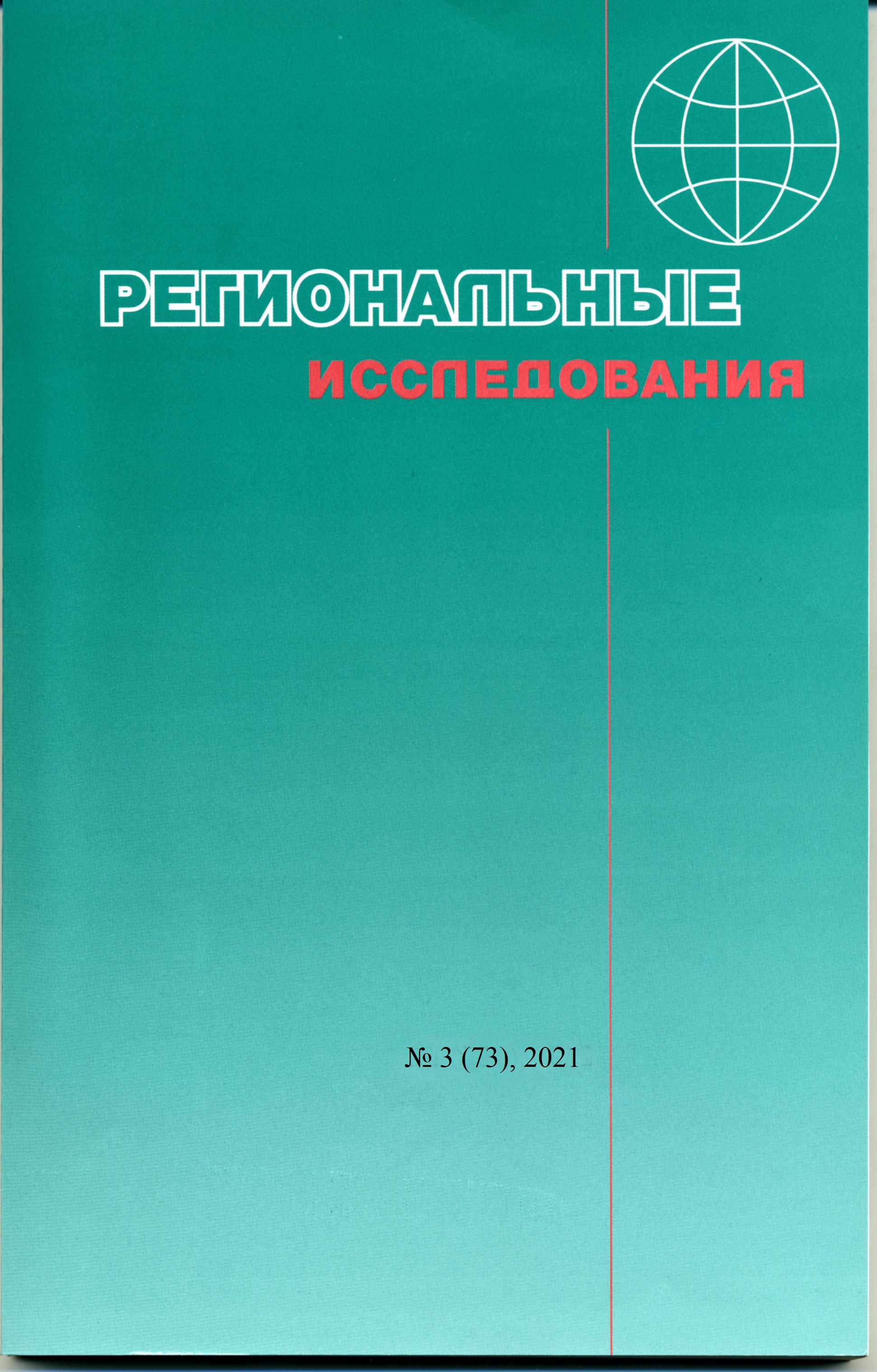Kuznetsova O.V. The economy of Russian regions in a pandemic: do shock resistance factors work?
DOI:
https://doi.org/10.5922/1994-5280-2021-3-7Keywords:
COVID-19, major cities, border regions, industry, population income, consumer market, innovation potentialAbstract
Despite the reason that is atypical for modern economic crises, the differentiation of Russian regions in terms of their socio-economic development in 2020 corresponded to the prevailing ideas about the factors of regional resilience. The degree of economic diversification of the regions and the level of their innovation potential were of key importance. As the result, the largest cities (Moscow and St. Petersburg) were in a relatively favorable position, where restrictions in certain types of activity were offset by an increase in demand for a number of complex services (in the IT sphere and others), the accelerated introduction of online formats of activity and remote employment. The specialization of the regional economy also mattered: the decline in the automotive industry was the highest, which is typical for crises. The general decline of the world economy hit the regions with large-scale extraction of fuel and energy resources. In 2020, the traditional factor of regional development was also significant – the capacity of sales markets, which also contributed to the growth of production in the largest cities and regions working for their markets and slowed down the development of manufacturing industries in the Far East. The border position of the regions did not have a clear impact on their development. It is assumed that the state anti-crisis policy allowed to slow down the decline in problem activities,while the increase in the production of goods and services in demanded activities was associated with the objective advantages of the territories.
References
Баринова В.А., Земцов С.П. Инклюзивный рост и устойчивость регионов России // Регион: экономика и социология. 2019. № 1. С. 23–36. DOI: 10.15372/REG20190102.
Жихаревич Б.С., Климанов В.В., Марача В.Г. Шокоустойчивость территориальных систем: концепция, измерение, управление // Региональные исследования. 2020. № 3. С. 4–15. DOI: 10.5922/1994-5280-2020-3-1.
Земцов С.П., Михайлов А.А. Тенденции и факторы развития малого и среднего бизнеса в регионах России в период коронакризиса // Экономическое развитие России. 2021. Т. 28. № 4. С. 34–45.
Зубаревич Н.В. Влияние пандемии на социально-экономическое развитие и бюджеты регионов // Вопросы теоретической экономики. 2021. № 1. С. 48–60. DOI: 0.24411/2587-7666-2021-10104.
Зубаревич Н.В., Сафронов С.Г. Регионы России в острой фазекоронавирусного кризиса: отличия от предыдущих экономических кризисов 2000-х // Региональные исследования. 2020. № 2. С. 4–17. DOI: 10.5922/1994-5280-2020-2-1.
Климанов В.В., Казакова С.М., Михайлова А.А. Региональная резилиентность: теоретические основы постановки вопроса // Экономическая политика. 2018. Т. 13. № 6. С. 164–187. DOI: 10.18288/1994-5124-2018-6-164-187.
Коломак Е.А. Экономические последствия COVID-19 для регионов России // ЭКО. 2020. № 12. С. 143–153. DOI: 10.30680/ECO0131-7652-2020-12-143-153.
Мильчаков М.В. Реализация приоритетов регионального развития в условиях пандемии // Финансовый журнал. 2021. Т. 13. № 2. С. 93–113. DOI: 10.31107/2075-1990-2021-2-93-113.
Минакир П.А. Экономика пандемии: дальневосточный аспект // Пространственная экономика. 2020. Т. 16. № 4. С. 7–22. DOI: 10.14530/se.2020.4.007-022.
Михеева Н.Н. Устойчивость российских регионов к экономическим шокам // Проблемы прогнозирования. 2021. № 1. С. 116–118. DOI: 10.47711/0868-6351-184-106-118.
Одинцова А.В. От стратегического планирования к территориальнойрезилиентности // Федерализм. 2020. Т. 25. № 4 (100). С. 26–41. DOI: 10.21686/2073-1051-2020-4-26-41.
Capello R., Caragliu A. Regional growth and disparities in a post-COVID Europe: A new normality scenario // Journal of Regional Science. May 2021. P. 1–18. DOI: 10.1111/jors.12542.
Dijkstra L., Garcilazo E., McCann P. The effects of the global financial crisis on European regions and cities // Journal of Economic Geography. 2015. № 15. P. 935–949. DOI: 10.1093/jeg/lbv032.
Economic Crisis: Resilience of Regions. Scientific Report. ESPON & Cardiff University, 2014. 280 p.
Klier T., Rubenstein J. What role did regional policy play in addressing the US auto industry crisis? // International Journal of Automotive Technology and Management. 2011. Vol. 11, № 2. P. 189-204. DOI: 10.1504/IJATM.2011.039544.
Kolko J., Neumark D. Does local business ownership insulate cities from economic shocks? // Journal of Urban Economics. 2010. Vol. 67, № 1. P. 103-115. DOI: 10.1016/j.jue.2009.08.006.
Territorial Impact Assessment: the State of the Cities and Regions in the COVID-19 Crisis. EuropeanUnion, 2020. 71 p.
The Urban and Regional Dimension of the Crisis. Eighth Progress Report on Economic, Social and Territorial Cohesion. EuropeanUnion, 2013. 48 p. DOI: 10.2776/74866.
OECD Regions and Cities at a Glance 2020. Paris: OECD Publishing, 2020. 166 p.

